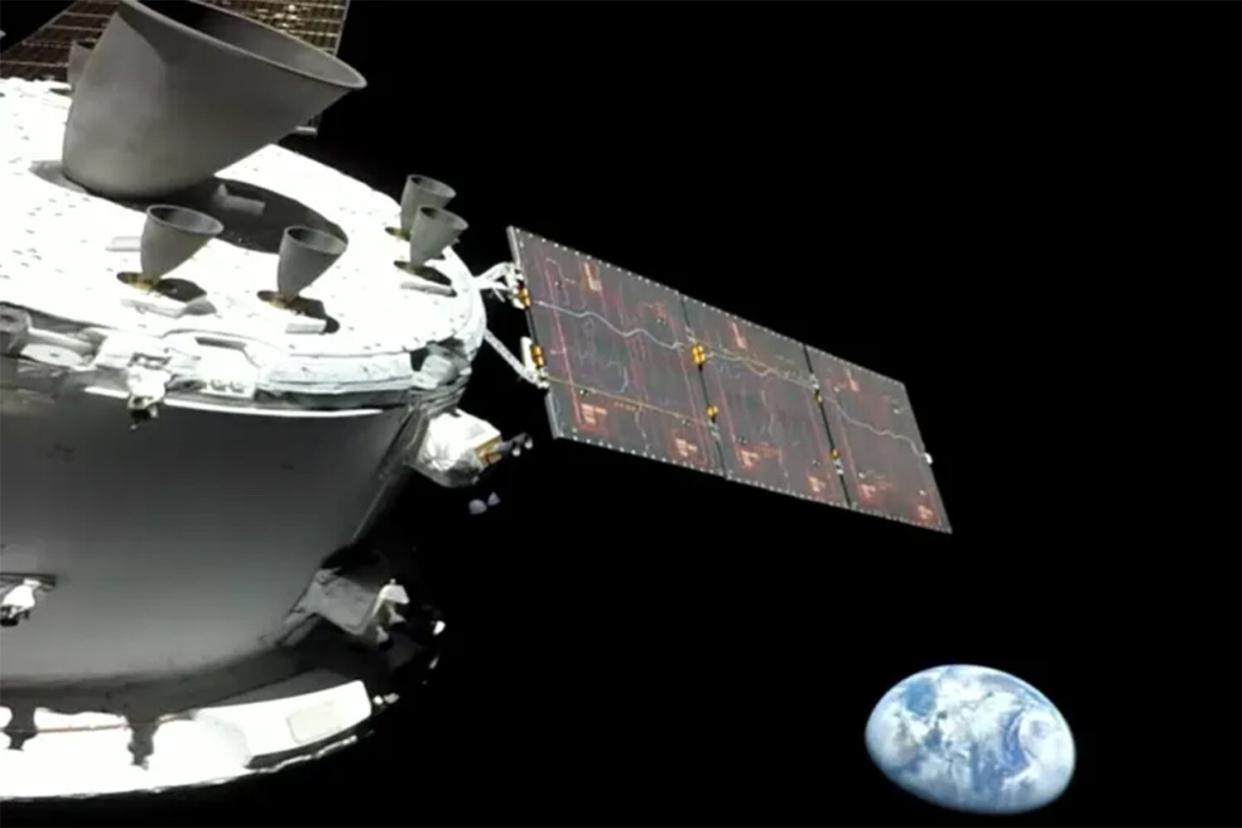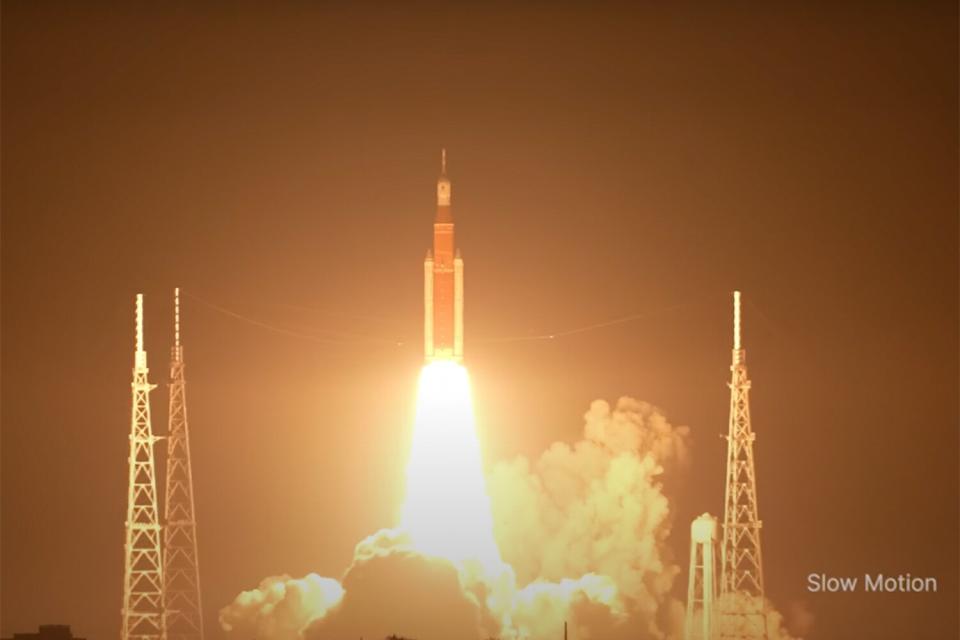NASA Official Says People Will Be Living on Moon's Surface Within a Decade as Orion Flies by Its Far Side

NASA
It's only a matter of time before people will be living — and working — on the surface of the moon, according to a NASA official.
Following its highly-anticipated launch on Wednesday, the Artemis 1 Mission reached a new milestone on Monday when Orion, a spacecraft on a five-week unmanned journey, flew just 81 miles above the far side of the moon's surface.
"It's the first step we're taking to long-term deep space exploration, for not just the United States but for the world," Howard Hu, the Orion program manager, recently told the BBC.
"We are going back to the moon," he continued. "We're working towards a sustainable program and this is the vehicle that will carry the people that will land us back on the moon again."

NASA
A follow-up manned mission, Artemis II, is expected in either 2023 or 2024, and the goal of Artemis I is to ensure the Orion spacecraft is functioning properly ahead of any astronauts going on board. A third mission, which will reportedly involve a SpaceX vehicle, will aim to return astronauts to the surface of the moon for the first time since the historic moon landings decades ago.
Hu said NASA's plan is to have people back on the moon within a "decade" — and he anticipates a more lasting presence on its surface.
"They'll have habitats and they'll have rovers on the ground," he reportedly told the BBC. "So, not only are we able to work on delivering people to the moon, getting people down to the surface of the moon, they still have to have infrastructure."
"We're going to be sending people down to the surface," he added, "and they're going to be living on that surface and doing science."
As Orion orbits the moon, which it will do for six days, it makes history as the farthest distance any spacecraft designed to carry humans has been from Earth, breaking the record set by Apollo 13 by 30,000 miles.
Earthset. 🌎@NASA_Orion captured this shot of Earth “setting” while the spacecraft passed close to the Moon. Nearly 270,000 miles (430,000 km) away, #Artemis I will soon surpass Apollo 13’s record-setting distance from Earth in a spacecraft designed to carry astronauts. pic.twitter.com/lvDS7nGPRo
— NASA (@NASA) November 21, 2022
As the spacecraft lost contact with NASA during its time above the far side of the moon, it captured videos and photographs of parts of its surface not visible from earth. NASA Flight Director Judd Frieling said it will take "a few days to get those particular images down." They will include never-before-seen imagery, he added.
RELATED: NASA Unveils Plans to Send the First Woman to the Moon in 2024
#Artemis I, Flight Day 5. Orion spacecraft takes a selfie while approaching the Moon ahead of the outbound powered flyby - a burn of Orion's main engine on the @ESA service module. During this maneuver Orion came within 81 miles of the lunar surface. pic.twitter.com/93GkJ7Ubry
— Orion Spacecraft (@NASA_Orion) November 22, 2022
The exciting news doesn't stop there for space enthusiasts. Hu acknowledged that a big reason for the Artemis missions is to build knowledge to apply to missions to Mars.
"It's really going to be very important for us to learn a little bit beyond our Earth's orbit and then do a big step when we go to Mars," he said. ""And the Artemis missions enable us to have a sustainable platform and transportation system that allows us to learn how to operate in that deep space environment."

 Yahoo News
Yahoo News 
